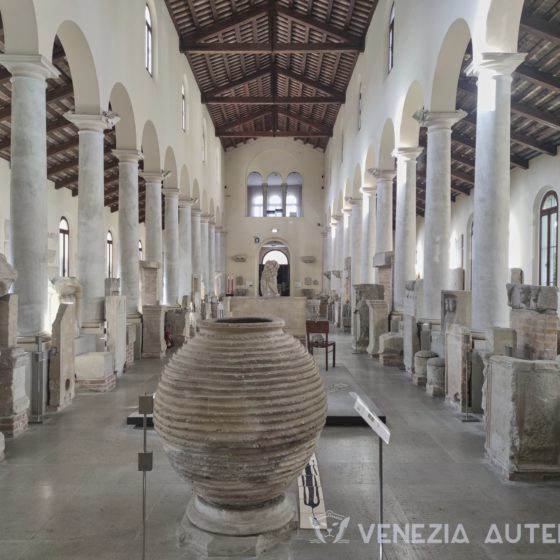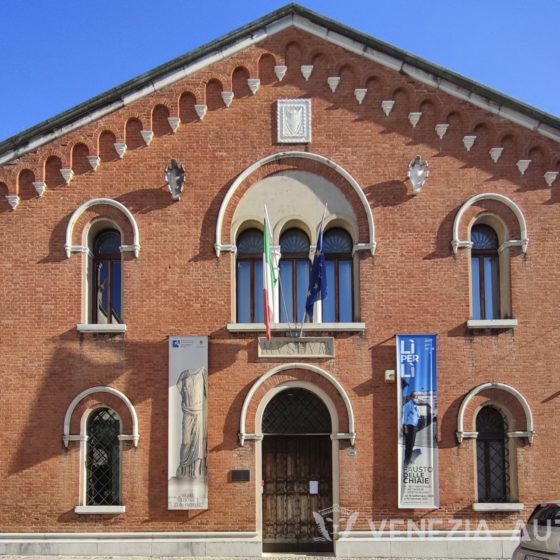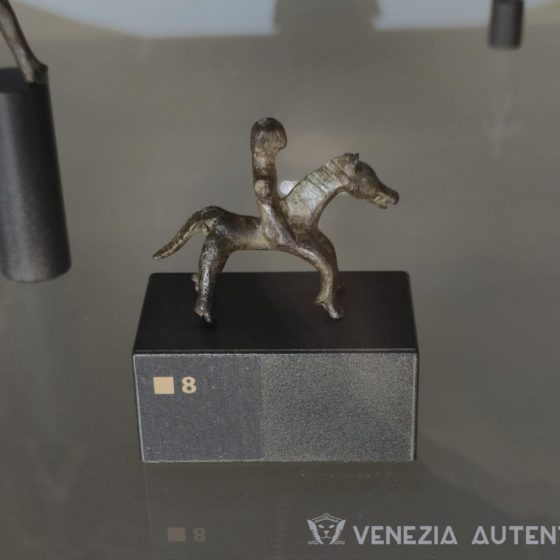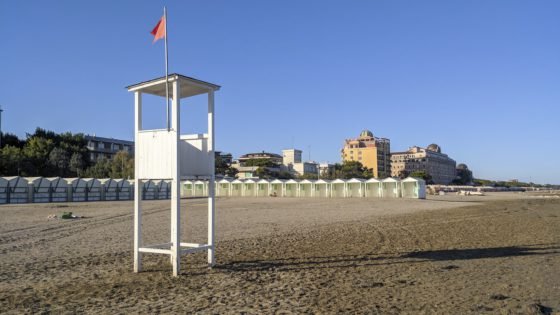Quarto d'Altino and Portogruaro
When speaking about the beautiful city of Venice, Italy, with its canals, bridge and gongolas, you might have heard about the famous glass island of Murano and the colourful houses of beautiful Burano.
But have you ever heard about Quarto d’Altino and Portogruaro?
No? We thought so
And it’s a pity, as the former is connected to the birth of Venice and the latter is just gorgeous and once a crucial passage for trades between Venice and northern countries countries
Ready to find out more?
The birthplace of Venice
Let’s say it immediately, we’ve not been precise up to this point: Quarto d’Altino can not be referred to as the birthplace of Venice.
We’ve been unprecise by roughly 6 km, but let us explain what we mean…
“Quarto”, in Latin, means four, and the small town of Quarto d’Altino is called so because it was built next to the famous city of Altino, which is indeed considered to be the birthplace of Venice.
How close is Quarto d’Altino to Altino? Four (“quarto”) Roman miles, of course! That is, about 6 km
Altino, the origin of Venice
Archaeological findings show that the area of Altino was temporarily inhabited as early as 10.000 years ago (yes, ten thousand!), but the first stable settlements took place during the Bronze Age, roughly 3.500 years ago.
A first real “town”, however, was founded only around 1.000 B.C.E. by early populations of Veneti and, by the end of the 6th century, Altino became an important port in the northern areas. Unfortunately, however, not much is known about that period.
In 131 B.C.E., Altino was peacefully conquered by Rome. Altino was soon urbanized according to Roman standards, and the Annia and Claudia Augusta roads were built, transforming the city into the centre of trades between the Mediterranean Area and Central Europe.
The wealth coming from the trades allowed the population to finance the creation of canals and artificial rivers, improving the drainage and exchange of water in the swampy area in which Altino rose, greatly improving the quality of life of the locals.
Soon, Altino’s centre had several canals crossed by bridges and ferries… doesn’t that sound familiar to you?
The city maintained its prominent role as a trades hub and its canalization system kept working for several centuries, until constant invasions by the Huns, Lombards, and Hungarians, and the rise in sea level which disrupted Altino’s canals system pushed many locals to look for safer places where to live.
Safe places such as islands in the middle of a Lagoon. A Lagoon too shallow to cross without getting stranded all the time, unless you knew it well.
That’s when, in the late 600s, people from Altino left their city and founded the first settlements in the Lagoon, namely Torcello and Burano. Much of what remained of Altino was stripped down and used as a source of building materials for the new buildings.
Altino continued existing throughout the Middle Ages, although now just a rural village surrounded by marshes.
Only at the beginning of the 1900s, when the area naturally dried, did locals casually stumble upon the remains of what looked like a rich and sophisticated civilization lost in time.
Today, the entire area of Altino is an archaeological site. Much, in fact, has not been discovered yet due to lack of fundings and it would be unforgivable to destroy the remains that are just waiting to be discovered. Just to give you an example, in 2007 researchers analyzing google maps images have discovered the foundations of an Arena measuring 150 x 110 metres, as big as that of Verona!
Altino also hosts the beautiful National Archaeological Museum of Altino, founded in 1960, that displays a great variety of archaeological findings and tells the story of Altino, and the origin of Venice. If you’re into Venice and history, you can’t miss it!
It is, also, part of the site “Venice and its Lagoon” which is a UNESCO World Heritage Site since 1987
Quarto d'Altino
Founded around the V Century, Quarto d’Altino was most likely a temporary village located four (quarto, in Latin) miles from the famous port and city of Altino.
Only 1.000 years later, in the XVth century, did Quarto d’Altino become a town with a stable population.
Today, Quarto d’Altino is still a small town of just 8000 inhabitants.
Also Quarto d’Altino, just like Altino, is part of Unesco’s World Heritage Site “Venice and its Lagoon”.
Quarto d’Altino has protected areas also beyond the Unesco’s site, 70% of its municipal area is subject to strict restrictions. This area, in fact, is also part of the Regional Natural Park of the River Sile, the naturalistic oasis of Trepalade!
This means, of course, that it is very hard to receive permissions to build anything in the area of Quarto d’Altino. But it also means that the environment is pristine and it offers a wonderful chance to into nature, just 1h away from Venice.
In particular, we’d like to mention the GiraSile cycle path which starts from Casacorba, follows the beautiful Sile river and reaches, after 90km, Portegrandi on the Venetian Lagoon!
Getting to Altino and Quarto d'Altino
Getting to Altino is super easy:
Head to Piazzale Roma in Venice and hop on the “25A” ATVO bus. Wait 40 minutes and you’ll be in Altino
Getting to Quarto d’Altino is just as easy:
Head to the Train Station in Venice, board a train that stops in Portogruaro. Stop at Quarto d’Altino train station 22 to 29 minutes later (depending on the train)
Finally, as we did, you can also take a train to Quarto d’Altino, rent a bike, and cycle on the beautiful bicycle path along the Sile! Then, take a right turn on the street “Via S.Eliodoro”, admire the canal and nature around you, and reach Altino
p.s: another way would also be possible, but when we visited a bridge crossing a local river was undergoing maintenance, so…
Portogruaro
Theoretically in the nearby Region of “Friuli Venezia Giulia”, the beautiful city of Portogruaro resembles a Venice of the mainland
The buildings of this city, which is remarkably beautiful and well-kept, are in typical Venetian style. Also the numerous canals, bridges contribute to this “Venetian” feeling.
Canals, however, are not filled with water from the Lagoon but, instead, with freshwater from the Lemene river. This river, which flows through the city, is part of the worldwide journey of sea eels, and is also the force that keeps the famous water mills of Portogruaro spinning since the XII Century!
Let’s quickly talk about the eels, it’s just too interesting trust us!
After about 10 years in the Lemene river, eel change and their body adapts to seawater: their colour changes to silver and shiny, their eye become bigger, they grow a gassy bladder, and their find become longer, too.
At this point, eels swim down the Lemenre river, across the Adriatic Sea, the Mediterranean and, finally, across the Atlantic Ocean all the way to the Sargasso Sea. There, they dive to a depth of 1.000 meters to reproduce and, at last, die.
New-born eels, who look like narrow leaves, make use of currents to make their way back to the rivers their parents left from. This journey takes about 3 to 4 years. Once eels enter the rivers’ freshwater, their body quickly changes to the shape we all know, but they measure only 65 to 85 cm and are see-through! As they make their way up the rivers, over the years, their colour becomes that of adult eels. And about 10 years after they first swam in the Lemene river, their body changes again to adapt to seawater and the cycle starts again.
Suppose you are thinking that this information is irrelevant in regards to Portogruaro. In that case, we are glad to say that it is not. All civilizations from the past evolved by knowing and leveraging the environment in which they settled.
Indeed, the relationship with the local environment was so crucial that even the name of Portogruaro is tied to the river. Portogruaro, in fact, was initially born along the Lemene river to serve as the river port (porto, in Italian) of a nearby city, Gruaro.
Before becoming part of the Serenissima Repubblica di Venezia, the Venetian Republic, it is thought that Portogruaro was under the influence of German powers. The city’s streets, in fact, are organized in a comb-like structure, with its two main roads running parallel to the Lemene river. Which is precisely how german settlements were organized at that time.
For centuries, Portogruaro grew steadily thanks to its very active merchants (also a typical approach of German societies) but in the late XIII century attempted coupes and occupations by foreign forces led Portogruaro to ask for the protection of the Serenissima.
Then, everything changed. Thanks to privileges given by the Venetian Republic, such as the possibility to sell salt and have the monopoly on the trade of iron, Portogruaro grew rapidly becoming the richest city in its area and enjoying a peace that lasted until the end of the Venetian Republic in 1796.
Things to see in Portogruaro
Top things to see in Portogruaro are:
- The famous mills on the Lemene
- The Museo archeologico nazionale concordiese, the oldest Museum in Veneto and one of the first in Italy!
- The town hall with its beautiful Gothic lace walls
- The Torre Civica Campanara, the third most leaning bell tower in Italy.
Bonus: take a walk along the river to visit nearby Concordia Sagittaria, a town founded over 2000 years ago. There, you can visit its beautiful Basilica, the ruins of an old temple where early Christians martyrs (until then persecuted by Roman emperors) where honored, and its beautiful Baptistery. Make sure to look up when you enter the Baptistery!
Getting to Portogruaro
Getting from Venice to Portogruaro is very easy:
Go to the Venice Train Station and hop on a train headed to Portogruaro. After 55 minutes, you reach the station of Portogruaro. The city centre is just 3 minutes away by foot



















